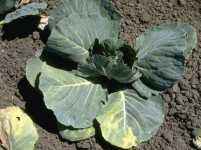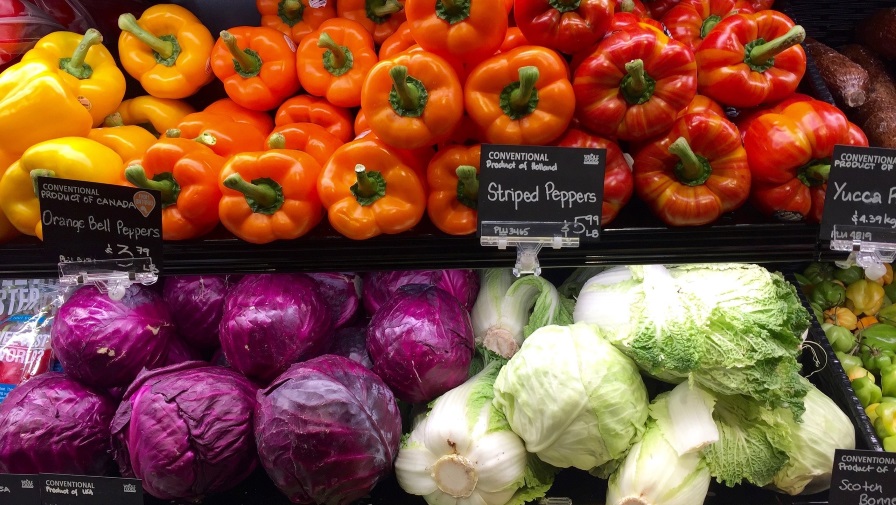Pest Of The Month: Fusarium Yellows of Cabbage

Identification
Yellows or fusarium wilt of cabbage occurs in all states where cabbage is grown in warm seasons. Although yellows is normally not a problem in winter-grown cabbage in the South, we have seen some problems this season in Florida possibly due to this year’s unseasonably warm winter.
The first sign of yellows is development of an abnormal yellowish-green color, which is typically more noticeable on one side of the plant. This is accompanied by a lateral warping or curling of the stem and leaves. This occurs as the lower part of the leaf blade wilts and dies resulting in a curve in the midrib. The lower leaves turn yellow first and symptoms move to the upper leaves. With time, affected leaves turn brown and become dry and brittle.
The vascular tissue in the stems and leaves turns dark brown, resembling symptoms of black rot. Fusarium can be distinguished from black rot as black rot symptoms begin as yellow spots at the leaf margins and work downward. This is in contrast to yellows, which begins internally and appears in the lower portions of the plant first. In addition (in black rot), the leaf veins become black, rather than brown, and are more apt to be discolored than in yellows.
Survival And Spread
Fusarium penetrates the young roots or may enter wounds made in older roots at transplanting and move up the vascular system into the leaves. The progression and rate of development of symptoms depends upon the degree of variety susceptibility and soil temperature. Under warm conditions, some varieties may die within two weeks. In other instances, the plant may decline gradually throughout the season.
Fusarium can remain alive in the soil for many years. The fungus does poorly at temperatures below 61°F and reaches its maximum growth rate between 80°F to 90°F.
The principal method of distribution of the fungus is via infected seedlings or infested soil, clinging to transplants, tractor and farm equipment wheels, plant debris, and drainage water. Seed plays no role in its distribution.
Management Methods
Since the fungus can live in the soil for many years, conventional controls such as rotation, seed treatment, fungicide sprays, and destruction of crop refuse are of little use once the fungus has become established in field. Use of resistant varieties is the only control. A number of cabbage cultivars possess resistance to Fusarium yellows and should be used in areas where the disease is a problem. Winter production in peninsular Florida generally avoids the disease because of cool soil temperatures.
Most varieties of broccoli and cauliflower have a high degree of natural resistance to yellows except in hot, dry seasons. Kale, kohlrabi, and collards are generally very susceptible.










